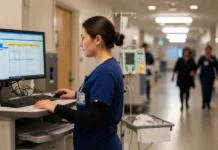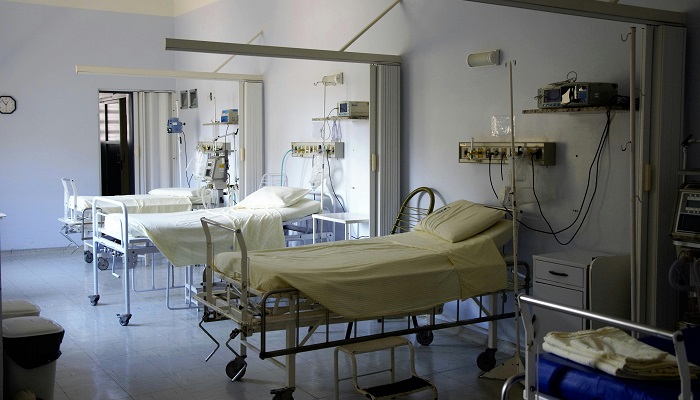Hygiene in hospitals is more than just a habit; it is an essential component of both the safety of patients and the quality of treatment they get. Maintaining high levels of hygiene is vital for avoiding infections and establishing a safe environment for patients, family, and healthcare personnel in hospitals. This includes implementing stringent cleaning and disinfection routines as well as modern sterilization methods. The purpose of this blog is to investigate the relevance of hospital hygiene as well as the complete ways that contribute to a clean and safely operating healthcare environment.
The Necessity of Maintaining Hygiene in Hospitals
The term “hospital hygiene” refers to a variety of procedures that are performed with the purpose of preventing and controlling infections in order to keep the environment safe. Hand hygiene, skin antisepsis, instrument cleaning, disinfection, and sterilization, together with surface and environment cleaning, disinfection, and sterilization, as well as biomedical waste management are all components of this holistic approach. To protect patients, healthcare staff, and visitors from the dangers that are connected with hospital-acquired infections (HAIs), each component plays an important part in the overall protection of these individuals.
The setting of a hospital is one of a kind, and the stakes are quite high. Because patients often have immune systems that are already impaired, the presence of opportunistic microorganisms in the surroundings of the hospital may result in serious infections and the problems that are associated with them. It is vital to implement efficient hospital hygiene standards in order to reduce the hazards involved, as well as to create a secure environment for the patient to heal and recover, as well as a secure working environment for the medical personnel.
Components Fundamental to the Hygiene of Hospitals
Proper hand hygiene is one of the most straightforward and efficient ways to stop the transmission of illnesses. It is also one of the most important things you can do. In order to guarantee that all staff members, patients, and visitors adhere to the established hygiene regulations, hospitals are required to provide hand washing facilities and hand sanitizers that are easily available.
Disinfection and Cleaning of Surfaces and Environments It is essential to do routine cleaning and disinfection of surfaces. Hard surfaces like floors, walls, OT tables, trolleys, and OT lights are included in this category. Soft surfaces, such as linen (bed sheets, pillow covers, curtains, patient uniforms, and reusable personal protective equipment), as well as high-touch locations such as door knobs, bed rails, and medical equipment, are also included. Effective disinfection of surfaces and environments helps to maintain a safe environment by lowering the danger of cross-contamination and reducing the likelihood of contamination.
When it comes to avoiding diseases that are transferred via medical tools, sterilization is an essential step that must be taken. Cleaning, disinfecting, and sterilizing medical instruments and equipment are very important. When it comes to ensuring that all of their equipment is free of microbes, hospitals use a variety of techniques, such as autoclaving, chemical disinfectants, and sterilant.
Administration of Biomedical Waste: The effective administration of waste is an essential component in the prevention of the transmission of diseases. For the purpose of reducing the likelihood of contamination, hospitals are required to adhere to stringent regulations for the separation, processing, and disposal of medical waste.
Education and Training programs
Staff education and training are of the utmost importance in order to ensure that hospital cleanliness measures are successful. Hygiene procedures and practices are something that every member of staff, from those who offer medical treatment to those who work in cleaning and housekeeping, has to be familiar with. Regular training sessions and updates on best practices ensure that everyone is prepared to maintain high levels of cleanliness and to comply with infection control policies at the hospital to the fullest extent possible.
The Latest Developments in Hospital Hygiene
In the subject of hospital hygiene, technological advancements continue to have a significant impact:
Antimicrobial Coatings: In order to provide ongoing protection against germs, several hospitals are adopting surfaces that have been treated with antimicrobial chemicals. Traditional cleaning procedures are supplemented by these coatings, which also contribute to a reduction in the microbial burden.
Automated Cleaning Systems: Automated systems, which include robotic cleaners and UV-C disinfection equipment, as well as automatic washer disinfectors, are being more used in order to improve cleaning efficiency and coverage. The use of these technologies allows for the provision of an additional layer of disinfection and the ability to reach locations that are difficult to clean manually.
Hygiene and infection control in hospitals provide a number of challenges.
Despite the progress that has been made, there are still obstacles to overcome in order to maintain appropriate hygiene and infection control standards:
Compliance: It may be difficult to ensure that cleanliness and infection control policies are adhered to consistently, particularly in hospitals that are big and have a lot of patient traffic. For the purpose of addressing compliance concerns and improving procedures, it is vital to conduct regular audits and monitoring.
The allocation of resources: In order to adhere to high hygiene standards, it is necessary to have sufficient resources, which include time, staff, and financial resources. A balance must be struck between these resources and other operational requirements in hospitals.
The Path Forward for Hygiene in Hospitals
The methods that are taken to hospital cleanliness and infection prevention will continue to develop in tandem with the changing environment of healthcare. The development of cleaning, disinfection, and sterilization techniques that are more efficient will be driven by ongoing research and innovation. It is expected that hospitals would place a greater emphasis on combining technological advancements with conventional procedures in order to improve overall cleanliness and patient safety.
In the field of healthcare, hospital cleanliness is an essential component that has a direct influence on the safety of patients and the quality of treatment they get. Hospitals are able to maintain high levels of cleanliness and infection control if they fully embrace technology innovations, invest in the training of their personnel, and adopt thorough infection prevention and control policies.


















